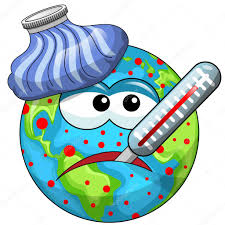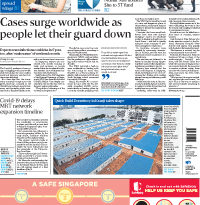SCI-MEDICINE | Cold hands, numb fingers? You might have Raynaud’s disease.
.Raynaud’s disease can cause fingers to turn white. Cold temperatures can be intolerable to people who suffer from the condition

George Banker keeps a pair of hand warmers in his car in case he needs them for trips to the grocery store. Without them, walking down the freezer aisle will turn his fingers white, then numb. Rita Cognion has a supply of “koozies” at home, polyurethane foam sleeves used to keep beverage bottles and cans cold. In her case, she stretches them to fit around an icy glass, protecting her hands from the cold.
.
Ad by:
Memento Maxima Digital Marketing
[email protected]
SPACE RESERVE FOR ADVERTISEMENT
.
Both Banker, from Fort Washington, Md., who is the operations manager for the Army Ten Miler foot race, and Cognion, a data scientist from Alexandria, Va., have Raynaud’s phenomenon (also called Raynaud’s disease), a condition in which exposure to cold causes blood vessels to the hands and feet to constrict, turning fingers and toes white or blue and numb. As they warm, they often turn red and throb with pain.
.
Ad by:
Memento Maxima Digital Marketing
[email protected]
SPACE RESERVE FOR ADVERTISEMENT
.
Attacks are more likely in the winter and in cold climates. But they can happen in any season, even when it’s hot outside.
“Raynaud’s doesn’t take the summer off,” says Marie Denise Gerhard-Herman, a cardiovascular medicine specialist at Brigham and Women’s Hospital and associate professor of medicine at Harvard Medical School. “This condition can be easily triggered in summer situations that involve cold exposures like going into the cold ocean or the freezer aisle of the grocery store, or an air-conditioned theater.”
There are two types of Raynaud’s phenomenon – primary and secondary. The primary form has no identified cause, experts say, while the secondary form usually accompanies another health condition, often autoimmune diseases such as rheumatoid arthritis, lupus or scleroderma. The secondary type can be more severe, sometimes leading to ulcers, tissue damage, even the need for amputations, experts say.
.
Ad by:
Memento Maxima Digital Marketing
[email protected]
SPACE RESERVE FOR ADVERTISEMENT
.
An estimated 5 to 10 percent of the population has Raynaud’s, the vast majority the primary type, according to the Raynaud’s Association.
Primary Raynaud’s afflicts more women than men, and usually occurs in those younger than 30, often starting during the teenage years. It can run in families, which suggests there may be a genetic connection, according to the National Institute of Arthritis and Musculoskeletal and Skin Diseases (NIAMS).
For most people, primary Raynaud’s is no more than a nuisance, although it can cause people to leave certain jobs or shun cold-related activities.
“Some people don’t even think to talk to a physician about it,” says Maureen Mayes, professor of internal medicine and Elizabeth Bidgood chair in rheumatology at the University of Texas McGovern Medical School. “They just think: ‘Oh, I must be cold sensitive.'”
The secondary form also can occur from an environmental exposure, or from some medications, including those for hypertension, migraines or attention-deficit/hyperactivity disorder, among others – and work-related exposures, such as repeated use of vibrating machinery, while certain chemicals or cold also can initiate it, according to NIAMS.
Ad by:
Memento Maxima Digital Marketing
[email protected]
SPACE RESERVE FOR ADVERTISEMENT
.
Sarah Hoddinott, a self-employed software and fundraising consultant from Belleville, Ontario, learned she had Raynaud’s when she was diagnosed with rheumatoid arthritis a year ago. “To quote the doctor who first used the word Raynaud’s: ‘My dear, once you have an autoimmune disease, it’s like having pizza – Raynaud’s is just one of the toppings you also might get,'” she recalls, adding that she often describes it as “a side dish” to her rheumatoid arthritis.
Even certain situations, commonplace for the unafflicted, can become problems for people with Raynaud’s. But they find ways to cope.
“I was at an airport recently trying to get my bags using a kiosk,” Banker recalls. “My fingers were so cold I couldn’t use the touch screen. I had to get help from an attendant.”
When Cognion dines out and forgets to bring a koozie, she wraps a dinner napkin around her glass. “When you have Raynaud’s, stemware is your friend,” she adds. She spends part of her time in Hawaii, where dealing with Raynaud’s is easier. Still, even when there, she takes measures to keep her Raynaud’s under control.
“I wear fingerless typing gloves in the overly air-conditioned offices,” she says. “I wore them in my office here on the mainland too before I started working remotely. The bad thing about the typing gloves is that the fingers stick out, but it’s the best I can do.”.Ad by:
Memento Maxima Digital Marketing
[email protected]
SPACE RESERVE FOR ADVERTISEMENT
.
When she is indoors and sedentary, even 70 degrees can feel cold, she says. It’s worse when she opens the freezer or washes produce under cold water, inconvenient since she eats a lot of fresh fruit and vegetables.
“I try to be quick when moving items around in the freezer,” she says. Also, “even at 70 degrees, I probably wear more layers indoors than other people,” she says.
She relies on mittens when running outdoors if the temperature goes below 70 degrees – they keep fingers warmer than gloves and puts air-activated chemical handwarmers inside the mittens when outdoor temps go lower than 62 degrees. “They have been a lifesaver,” she says.
Hoddinott, too, uses heated gloves and mittens and wears them every time she goes outside for more than a minute or two. “Last summer when the temperature dropped to . . . 64 Fahrenheit, I had to start wearing them because my fingers would go numb and white four or five times a day,” she says. “I also keep a small heater on my desk so I can warm up my fingers a bit if I’m on a conference call. Otherwise, they stay numb until I run them under warm water for a few minutes.”
Hoddinott, a former Rockville, Md., resident, shunned air conditioning when she lived in the suburb near D.C., despite the often sweltering weather. “The shock of very hot to very cold was always uncomfortable, so I would [set] my air conditioner at 85 [Fahrenheit] and feel quite comfortable” she says. “But anytime I step into a heavily air-conditioned space from the heat . . . my fingers immediately start to go numb.”
.
Ad by:
Memento Maxima Digital Marketing
[email protected]
SPACE RESERVE FOR ADVERTISEMENT
.
Gerhard-Herman advises her patients to give up caffeine or stick to just one cup of coffee a day and avoid medication for ADHD that stimulates “the narrowing of the arteries in fingers and toes,” she says.
Mayes, who also directs the university’s scleroderma clinic, recommends keeping the central body warm to prevent the body from drawing heat away from the extremities to protect the core, a survival reflex. “Wear an extra layer – a sweater or jacket – even in the summer,” she says.
Raynaud’s has no cure. But some treatments can help. Although there are no approved medications for Raynaud’s, doctors sometimes prescribe drugs used for other conditions, such as vasodilators, which improve circulation by opening blood vessels. “The problem is that they also can lower blood pressure, and people can get dizzy and lightheaded,” Mayes says.
For people with severe Raynaud’s, a physician may recommend a sympathectomy, a procedure performed by incision or injections that destroys the nerves that trigger narrowing of the blood vessels. It can improve symptoms, but it may need to be repeated after several years, according to NIAMS.
.
Ad by:
Memento Maxima Digital Marketing
[email protected]
SPACE RESERVE FOR ADVERTISEMENT
.
Finally, experts also urge Raynaud’s patients to try to ignore the insensitive comments of others who find glove-wearing in the summer and other behaviors odd.
“I had a patient tell me that after she shook someone’s hand, the other person said: ‘What’s wrong with you? Are you dead?’ That was a terrible thing to say,” Mayes says. “I tell my Raynaud’s patients to just say: ‘I’m cold sensitive’ – and leave it at that.”
Related Content
Their medications cause pregnancy issues. Post-Roe, that could be dangerous.











